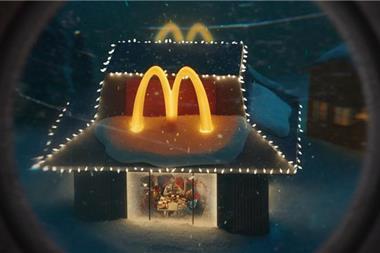Darren Tristano, of Chicago-based foodservice research firm Technomic, looks at the US late-night dining sector and what lessons UK operators can learn.
Nearly three times as many US consumers aged 18-34 as those 35 and older visit foodservice for meals after 9pm, at least monthly. Creating a lively, upbeat atmosphere is important to attracting this key demographic.
This piece looks at consumer preferences and priorities in late-night dining, and examines some of the US restaurants trying to attract evening guests.
Largely due to differences in lifestyle, the majority of consumers aged 18-34 (56%) go out for late-night occasions at least once a month, while just 21% of consumers aged 35 and older would do the same, according to Technomic’s recent Dinner & Late Night Consumer Trend Report.
Men tend to go out late-night more often than women. Additionally, at least 40% of Asians, African Americans and Hispanics go out late-night at least once a month, against just 24% of Caucasians. Given these stats, late-night operators often offer more items with ingredients and flavours of Asian and Latin American cuisines.
Fast-food restaurants offer a convenient location, drive-through service, craveable items and a variety of portion sizes for consumers who are only looking for a snack. So it is no surprise to find that consumers are most likely to visit a fast-food restaurant for late-night dining.
Some successful restaurant operators beyond fast-food emphasize the convenience of their restaurants for late-night occasions. They might offer mobile apps that allow ordering ahead to reduce wait times. For example, consumers can order and pay carside-to-go on Applebee’s mobile app.
Consumers are also likely to visit bars late in the evening. Bargain hunters frequent these locations more often than the average consumer, probably because these locations offer happy-hour deals or smaller portions for lower prices.
Late-night patronage hasn’t increased much over the past two years. Just 13% of consumers say they are visiting restaurants late at night more often now than two years ago. This is driven by younger consumers (25%), while considerably fewer older consumers (7%) have increased their late-night restaurant visitations.
Consumers weigh convenience – in the form of location and table service – most heavily of all restaurant attributes measured in their decision to choose which outlet to visit for late-night dining. In fact, far more consumers cite convenient locations and table service as important than a lively or quiet atmosphere.
Although equal percentages of consumers say a lively, upbeat atmosphere and a quiet, relaxing atmosphere are important to them, there are differences in preference by age. More consumers aged 18-34 than those aged 35 and older say a lively, upbeat atmosphere is important to them, while older consumers tend to prefer a quiet, relaxing atmosphere. Additionally, a significantly higher percentage of younger consumers say sports on TV, live music and games are important.
Creating a lively, upbeat atmosphere is important in attracting younger consumers. Operators do so by offering sports on TVs; live music or DJs; themed game nights and/or trivia nights; and other games, such as video or arcade games, pool or darts.
While a convenient location is very important for late-night dining occasions, the type of food available is more important. Additionally, a majority of consumers say the availability of a full menu is important, suggesting that they prefer seeing a wide variety of options or that they intend to have a full meal.
Restaurant operators may offer their full menu for late-night occasions in order to drive traffic. But some will offer a small menu of customisable options, which allows them to streamline their menu while still offering an array of product choices.
Half of consumers say food specials are important to them, most likely because late-night patrons are mostly younger consumers, who tend to earn lower incomes.
Although more women than men say that any of these attributes measured are very important to them, significantly more women than men say that a separate food and beverage menu and healthy menu options are very important to them.
Quick-service chains are increasingly competing for late-night business, with new menus and indulgent, shock-value items.
Because younger consumers – including college students – are driving late-night business, evening trends include new menus (separate from the dinner menu)featuring indulgent, portable fare; outlets turning up their volume and changing ambiance for late-night hours; and steeply discounted combo meals.
Operators can gain new business from those working outside of traditional work hours or choosing to be out late at night, including late-night party-goers targeted by “fourthmeal” or “munchie meal” menus.
For instance, Jack in the Box launched a munchie meal menu in late 2013, available 9pm-5am. For these hours, the chain released late-night-only menu boards and staff uniforms, in addition to playing Top 40 music at a louder volume. Munchie entrées come with sides and a drink for $6.
Also in 2013, McDonald’s began offering an “after-midnight” menu of breakfast and dinner options from midnight until 4am at 24-hour restaurants in select markets. The breakfast menu is not otherwise available outside of the breakfast daypart.
And sister concepts Checkers Drive-In Restaurants and Rally’s Hamburgers recently said that they were targeting customers looking for late-night indulgence. In 2014, the company introduced grilled-cheese sandwich strips that are breaded and deep fried, available in a four pack for $1.99.
Full-service restaurants are also courting evening diners, developing bar dining alongside their regular dinner offers, with particular focus on snacks and innovative adult drinks for late-night occasions.
Aligning with the overall snacking trend, 32% of consumers – up from 27% in 2011 – say that they sometimes make a dinner out of appetisers at restaurants. Signature and speciality adult beverages differentiate full-service concepts. Many offer specific small plate and snack menus, often paired with drinks. And innovative bar fare often features a healthy and indulgent menu mix – flatbreads and food flights proliferate – frequently at a lower price at the bar.
Casual-dining concept Andiamo, for instance, launched late-night and happyhour drink and food specials at all units in summer 2014. On both menus, select appetisers are priced at $2.99 and “foodtinis” – snacks served in stemless martini glasses – are $4.99. And Yard House debuted an “eat-late” menu last year to lure late-night diners, inspired by the gourmet street food movement. Offerings include a black-truffle cheeseburger, pastrami hot dog, chilaquiles and Monte Cristo pops.
Look for more customisability across full-service bar dining in an effort to continue to differentiate and innovate while offering customers a fun, interactive experience. Think build-your-own cocktails and create-your-own snack flights.
And we’ve seen a proliferation of late-night menus among quick-service restaurants with craveable fare – from tacos to burgers. Look for this trend to extend to the fast-casual chains with similar fare going forward, including fast-casual Mexican and burger chains.










































